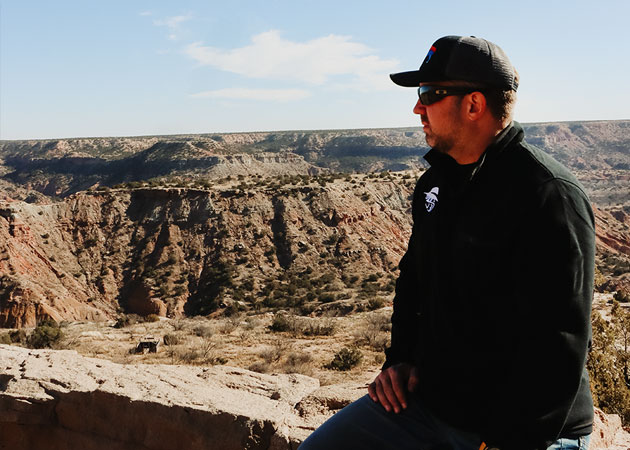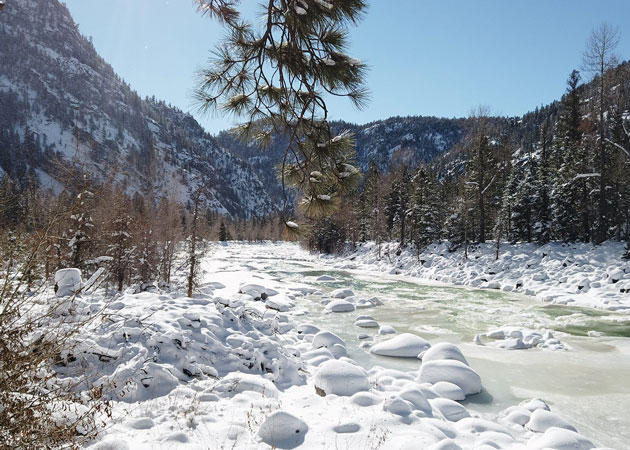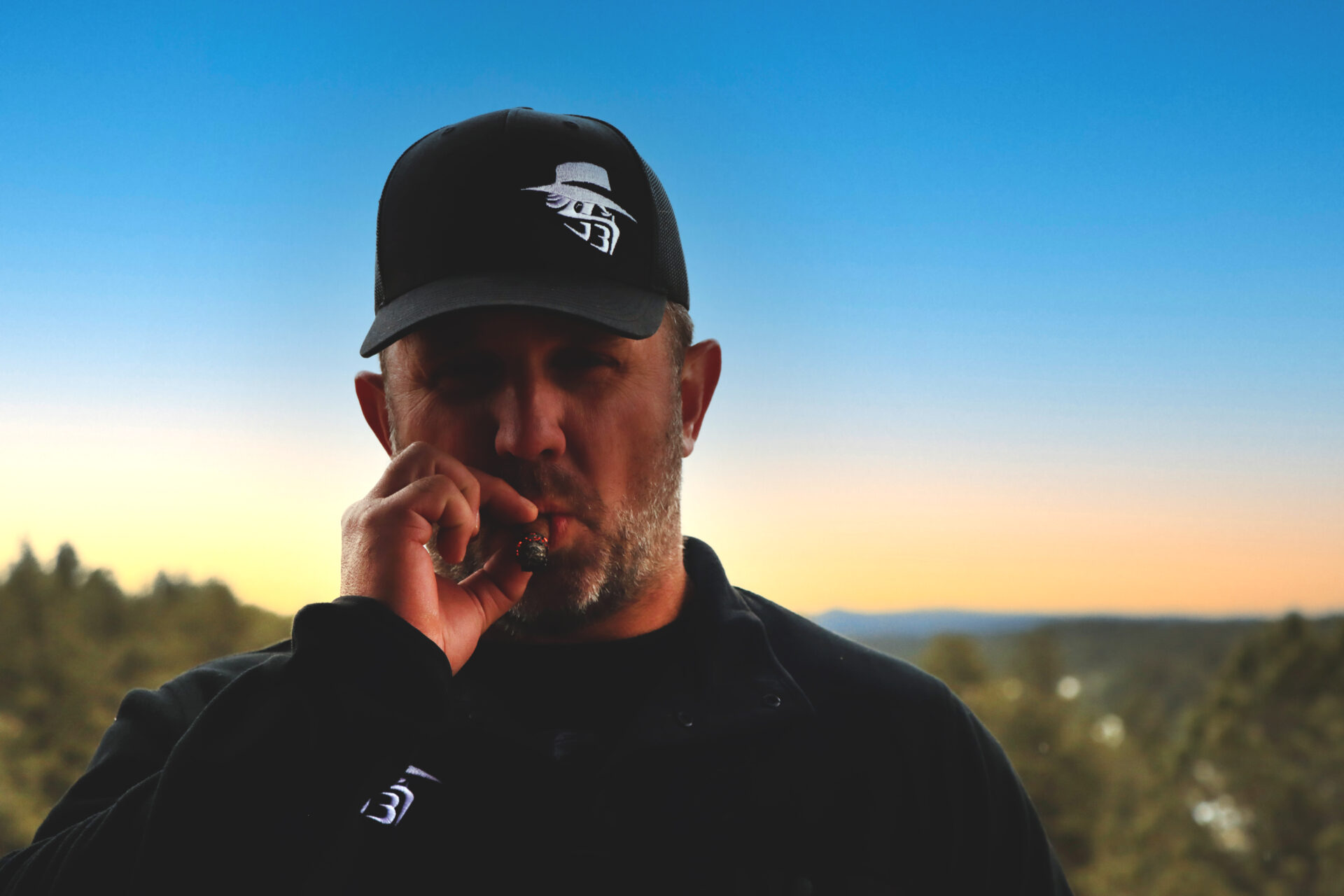The Top Five Largest Ranches in Texas: A Deep Dive into the Heart of Ranching Heritage
Introduction
Texas, often hailed as the heart of ranching heritage in the United States, boasts an impressive array of sprawling ranches that have shaped its economy and culture for centuries. From the iconic King Ranch to lesser-known but equally impressive properties, these ranches represent a tapestry of history, agriculture, and natural beauty. In this article, we delve into the top five largest ranches in Texas, exploring their origins, size, activities, and impact on the local and state economies.
Top Five Largest Ranches in Texas: A Closer Look
To understand the magnitude and significance of these ranches, let’s examine them in detail, starting with the legendary King Ranch.
Rank | Ranch Name | Size (Acres) | Location | Founding Year |
1 | King Ranch | 825,000 | South Texas | 1853 |
2 | Waggoner Ranch | 510,000 | North Texas | 1849 |
3 | Y.O. Ranch | 430,000 | Hill Country | 1880s |
4 | Brewster Ranch | 424,000 | West Texas | 1950’s |
5 | La Escalera Ranch | 223,000 | Trans-Pecos region | 1990s |
6 (Bonus) | 6666 Ranch | 260,000 | West Texas | 1870s |
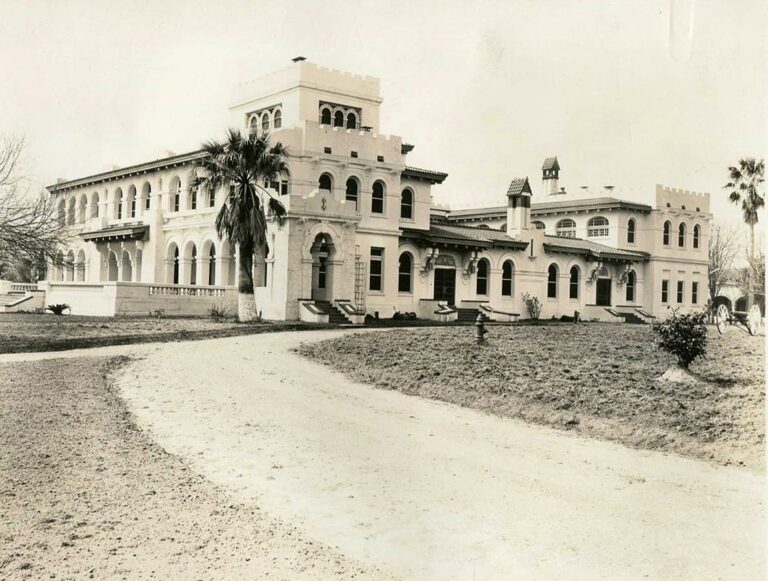
1. King Ranch
The King Ranch, spanning an astonishing 825,000 deeded acres in South Texas, is more than just a ranch; it’s a living testament to the state’s rich ranching heritage. Established in 1853 by Captain Richard King and Gideon K. Lewis, this iconic property has grown from humble beginnings into a sprawling empire that continues to shape the agricultural landscape of Texas and beyond.
Historical Background and Founding
The story of the King Ranch begins with Captain Richard King, a visionary entrepreneur and skilled rancher who recognized the potential of South Texas’s vast grasslands for cattle grazing. Partnering with Gideon K. Lewis, King acquired the initial parcel of land and gradually expanded the ranch through strategic acquisitions and shrewd management practices. The ranch’s founding in 1853 marked the beginning of a legacy that would endure for generations.
Size and Geographical Features
One of the defining characteristics of the King Ranch is its sheer size. With over 825,000 acres of land, the ranch encompasses a diverse range of ecosystems, including coastal marshes, prairies, and brush country. This vast expanse provides ample grazing opportunities for cattle and supports a variety of wildlife species, making it a haven for both ranching and conservation efforts.
Key Activities and Operations
At the heart of the King Ranch’s operations is cattle ranching, which has been the primary focus since its inception. The ranch is home to a sizable herd of cattle, including various breeds adapted to the South Texas climate. Additionally, the King Ranch engages in agricultural activities such as crop production, particularly sorghum and cotton, further diversifying its revenue streams.
Notable Landmarks or Features on the Ranch
The King Ranch boasts several notable landmarks and features that highlight its rich history and cultural significance. One such landmark is the King Ranch Museum, located in Kingsville, which showcases artifacts, exhibits, and interactive displays chronicling the ranch’s storied past. Visitors can also explore the King Ranch Saddle Shop, renowned for its handmade leather goods and western apparel.
Impact on the Local Economy and Community
Beyond its agricultural and cultural contributions, the King Ranch plays a vital role in the local economy and community. The ranch employs a significant number of workers across various sectors, from ranch hands and agricultural specialists to administrative staff and hospitality personnel. Additionally, the King Ranch Foundation supports educational initiatives, conservation projects, and community development efforts in the region.
Conservation Initiatives and Stewardship Practices
Recognizing the importance of preserving natural resources, the King Ranch has implemented various conservation initiatives and stewardship practices. These efforts include land management strategies to maintain healthy ecosystems, wildlife habitat conservation projects, and water conservation measures. The ranch also collaborates with conservation organizations and researchers to advance sustainable ranching practices. The King Ranch and Texas A&M collaborated in 2003 to create the The King Ranch® Institute for Ranch Management to sustain the heritage of ranching through education, innovation, and outreach.
Future Outlook and Legacy
As the King Ranch continues to evolve and adapt to changing agricultural trends and environmental challenges, its legacy remains firmly rooted in the principles of stewardship, innovation, and community engagement. With a commitment to sustainable land management and a passion for preserving Texas’s ranching heritage, the King Ranch is poised to continue its legacy for generations to come.
In conclusion, the King Ranch stands as a shining example of Texas’s ranching prowess, blending tradition with innovation to uphold its legacy as one of the largest and most influential ranches in the world.
How Big is The King Ranch? Is The King Ranch Contiguous?
The King Ranch is a total of 825,000 acres, divided into four different divisions or sections. The King Ranch might be the largest privately held ranch in the United States (All Deeded Acres), it is not the largest contiguous (under one fence) ranch in the United States. Go here for the largest contiguous ranches in the United States – LINK. Please refer to the “The King Ranch Map” below. Enjoy the live interactive mapping:d
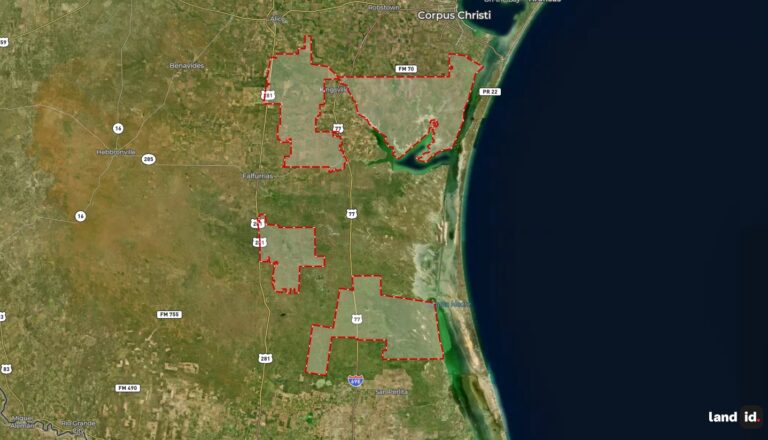

2. Waggoner Ranch
The Waggoner Ranch, spanning an impressive 510,527 deeded acres in six different (Wilbarger, Foard, Knox, Baylor, Archer, Wichita) counties in North Texas, stands as a testament to the enduring legacy of ranching excellence in the Lone Star State. Founded in 1849 by Dan Waggoner, this iconic ranch has played a pivotal role in shaping Texas’s cattle industry, land development, and cultural heritage. As one of the largest contiguous (under one fence) ranches in the United States, the Waggoner Ranch boasts a rich history, diverse ecosystems, and a commitment to sustainable land management practices.
Historical Background and Founding
The story of the Waggoner Ranch begins in the mid-19th century when Dan Waggoner, a pioneer and cattleman, established the ranch in what was then the frontier of North Texas. Over the decades, the Waggoner family’s stewardship and vision transformed the ranch into a sprawling enterprise encompassing vast grasslands, rolling plains, and meandering rivers. Through hard work, dedication, and a deep love for the land, the Waggoner Ranch became synonymous with Texas’s ranching heritage.
Size and Geographical Features
With its expansive size of 535,000 acres, the Waggoner Ranch occupies a diverse landscape that includes prairies, rivers, woodlands, and mesquite groves. The ranch’s geographical features are as varied as they are breathtaking, offering a mosaic of natural beauty and ecological diversity. From the fertile soils along the Red River to the rugged canyons of the Wichita Mountains, the Waggoner Ranch showcases the rich tapestry of Texas’s natural landscapes.
Key Activities and Operations
At the heart of the Waggoner Ranch’s operations is its longstanding tradition of cattle ranching. The ranch maintains a robust herd of cattle, carefully bred and managed to uphold the highest standards of quality and productivity. Additionally, the Waggoner Ranch engages in other agricultural activities, such as hay production, to support its livestock operations and maintain sustainable land use practices.
Beyond ranching, the Waggoner Ranch has also ventured into oil and gas exploration, contributing to its economic diversity and resilience. The discovery of oil on the ranch’s lands added a new dimension to its operations, generating revenue and opportunities for growth while adhering to environmental regulations and best practices.
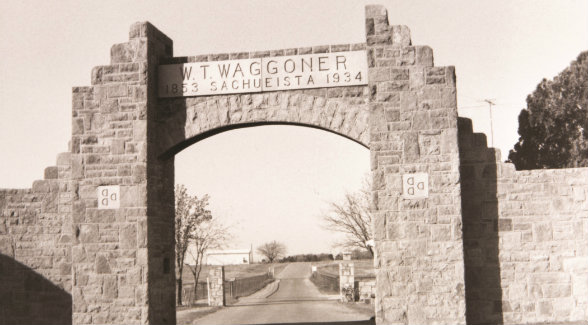
Notable Landmarks or Features on the Ranch
The Waggoner Ranch is home to several notable landmarks and features that highlight its rich history and cultural significance. One such landmark is the Waggoner Mansion, a stately residence built in the early 20th century that serves as a testament to the ranch’s prosperity and grandeur. Additionally, the ranch’s historic cattle pens, barns, and outbuildings reflect the ingenuity and craftsmanship of generations past.
The Red River, which forms part of the ranch’s boundary, is not only a scenic waterway but also a vital resource for irrigation and wildlife habitat. The Waggoner Ranch’s commitment to conservation ensures that these natural landmarks are preserved for future generations to enjoy and appreciate.
Impact on the Local Economy and Community
The Waggoner Ranch’s influence extends beyond its boundaries, impacting the local economy and community in significant ways. Through job creation, economic activity, and support for local businesses, the ranch plays a vital role in sustaining rural communities and fostering economic growth in the region. Moreover, the Waggoner family’s philanthropic efforts, including contributions to education, healthcare, and conservation, have made a lasting impact on the quality of life for residents in the area.
In conclusion, the Waggoner Ranch stands as a beacon of ranching excellence, environmental stewardship, and community engagement. Its legacy, spanning generations, serves as a reminder of Texas’s rich ranching heritage and the enduring spirit of those who have dedicated their lives to the land. As the Waggoner Ranch continues to evolve and adapt to changing times, it remains a symbol of resilience, tradition, and innovation in the heart of Texas.
The Sale of Waggoner Ranch
In 2016, billionaire businessman Stan Kroenke purchased the legendary Waggoner Ranch for an estimated $725 million, making him one of the largest landowners in America with over 1,500,000 acres. This acquisition marked a significant shift from family ownership to corporate management after over a century. Kroenke, known for his real estate and sports empire, already owned several ranches across North America, but the Waggoner Ranch held special significance due to its history and legacy.
Under previous management, the ranch operated with cowboys living on-site, fostering a close-knit community deeply rooted in tradition. However, Kroenke’s ownership brought inevitable changes, including alterations in operations. Despite these changes, Kroenke has expressed a desire to maintain the ranch’s unity and not divide it.
For more information on Waggoner Ranch go here – Waggoner Ranch: A Legacy of Land, Oil and Cattle
Please refer to the “Waggoner Ranch” below. Enjoy the live interactive mapping:
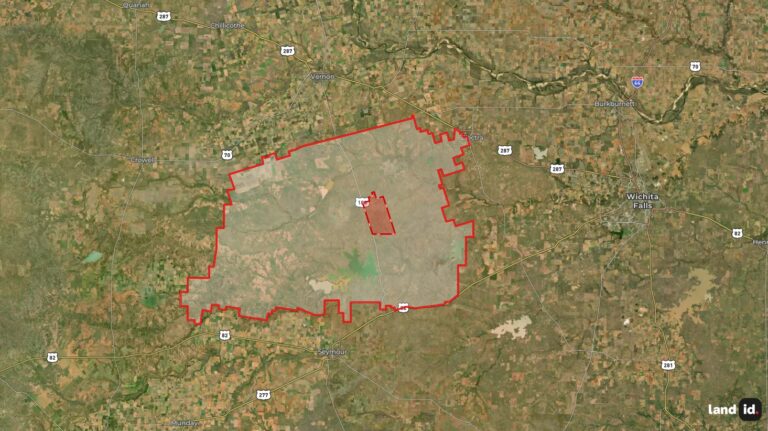
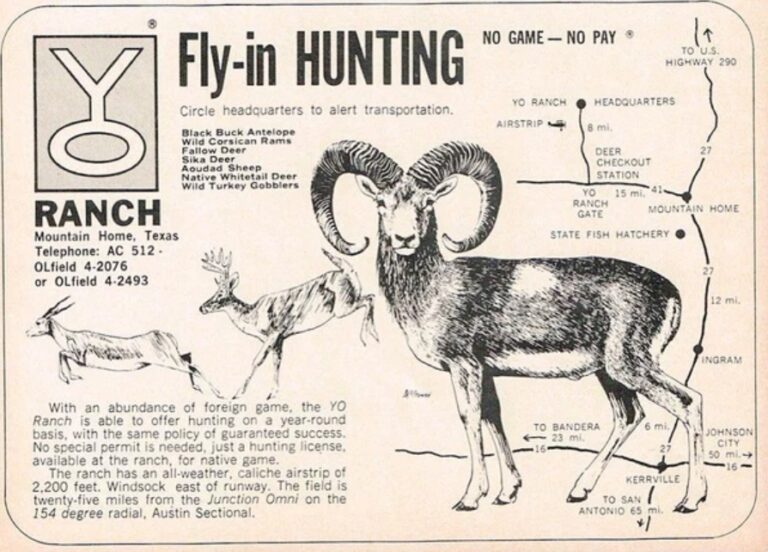
3. Y.O. Ranch
Nestled amidst the picturesque landscapes of the Texas Hill Country in Kerr County, the Y.O. Ranch stands as a testament to Texas’s enduring ranching legacy. Spanning an impressive 430,000 acres, this sprawling property has been a beacon of ranching excellence since the 1880s, when it was established by Charles Schreiner. Over the decades, the Y.O. Ranch has evolved into a multifaceted operation, combining cattle ranching, hunting, ecotourism, and conservation initiatives.
Historical Roots and Evolution
The history of the Y.O. Ranch traces back to the late 19th century when Charles Schreiner, a German immigrant and prominent businessman, acquired vast tracts of land in the Hill Country. His vision was to create a thriving ranching enterprise that would not only sustainably raise cattle but also preserve the natural beauty of the region. Today, the Y.O. Ranch has been sold off or fragmented of its once former glory. Of the 430,000 acres, only 11000+/- acres remaining. 3,000+/- of the 11,000 acres remaining are currently up for sale (2024). Go here for more information – LINK
Landscape and Biodiversity
One of the defining features of the Y.O. Ranch is its diverse landscape, characterized by rolling hills, oak-studded valleys, clear spring-fed creeks, and rugged canyons. This rich tapestry of habitats supports a wide range of flora and fauna, making it a haven for wildlife enthusiasts and conservationists alike. From native whitetail deer and Rio Grande turkeys to exotic species like axis deer and blackbuck antelope, the ranch offers a unique glimpse into Texas’s natural heritage.
Ranching Operations, Livestock Management, and Exotic Game
At the core of the Y.O. Ranch’s operations is its cattle ranching enterprise. Here, traditional ranching practices meet modern techniques to ensure the health and productivity of the livestock. The ranch maintains a robust herd of cattle, primarily consisting of breeds adapted to the Texas climate, such as Angus and Hereford. Grazing rotations, pasture management, and veterinary care are meticulously overseen to optimize herd health and sustainable land use.
In the 1930s, the Y.O. Ranch underwent a remarkable transformation. A wave of exotic animals, each a dazzling ambassador from a faraway land, arrived to share the ranch’s vast territory. These included the majestic axis deer, with its spotted coat and impressive antlers, the elegant blackbuck antelope, its sleek form a testament to African grace, the stately sika deer, its dappled fur offering a touch of Asian mystery, and many other exotics. Introduced with meticulous planning, these foreign inhabitants flourished in their adopted home. The rugged Texas Hill Country, with its temperate climate and diverse terrain, proved to be a perfect fit.
The arrival of these exotic species wasn’t just about aesthetics. It enriched the local wildlife tapestry and created an alternate means of income for the ranch, creating a haven that resonated with a wider audience. Hunters found a thrilling challenge in these new trophies, while wildlife enthusiasts marveled at the vibrant tapestry of life. Nature lovers, too, were drawn to the ranch, eager to witness this unique confluence of native and international fauna. Over the years, these imported animals became more than just residents; they became an integral part of the Y.O. Ranch’s identity, the region, and even changed the hunting industry. Their presence symbolized the harmonious blend of the ranch’s deep-rooted heritage and its commitment to embracing global biodiversity. The Y.O. Ranch transformed from a stunning Texas landscape into a remarkable microcosm, showcasing the beauty of nature’s tapestry on a global scale.
Wildlife Conservation and Ecotourism
Beyond ranching, the Y.O. Ranch is renowned for its wildlife conservation efforts and commitment to environmental stewardship. Through habitat restoration projects, wildlife corridors, and sustainable land management practices, the ranch aims to protect native species and preserve biodiversity. Additionally, the ranch offers guided wildlife tours, nature hikes, and photography safaris, providing visitors with an immersive experience in Texas’s natural wonders.
Experiences and Amenities
Visitors to the Y.O. Ranch can immerse themselves in the cowboy lifestyle through a range of activities and amenities. From rustic-chic accommodations in historic lodges to authentic chuckwagon dinners under the stars, the ranch offers a glimpse into Texas’s frontier heritage. Outdoor enthusiasts can enjoy hiking, fishing, birdwatching, and horseback riding amid breathtaking scenery, while hunters can participate in guided hunts for deer, turkey, and exotic game species.
Sustainable Practices and Community Engagement
As stewards of the land, the Y.O. Ranch prioritizes sustainable practices that minimize environmental impact and promote long-term viability. This includes water conservation measures, native grassland restoration, and wildlife habitat enhancement projects. Moreover, the ranch actively engages with local communities through educational outreach programs, partnerships with conservation organizations, and support for rural development initiatives.
Legacy and Future Outlook
The Y.O. Ranch’s legacy extends far beyond its physical boundaries, encompassing a commitment to preserving Texas’s ranching heritage for future generations. By embracing innovation, conservation, and responsible land management, the ranch continues to thrive in a dynamic and ever-changing landscape. As Texas’s Hill Country remains a focal point of natural beauty and cultural richness, the Y.O. Ranch stands as a shining example of harmonious coexistence between tradition and progress in the ranching industry.

Wildlife Conservation and Ecotourism
Beyond ranching, the Y.O. Ranch is renowned for its wildlife conservation efforts and commitment to environmental stewardship. Through habitat restoration projects, wildlife corridors, and sustainable land management practices, the ranch aims to protect native species and preserve biodiversity. Additionally, the ranch offers guided wildlife tours, nature hikes, and photography safaris, providing visitors with an immersive experience in Texas’s natural wonders.
Experiences and Amenities
Visitors to the Y.O. Ranch can immerse themselves in the cowboy lifestyle through a range of activities and amenities. From rustic-chic accommodations in historic lodges to authentic chuckwagon dinners under the stars, the ranch offers a glimpse into Texas’s frontier heritage. Outdoor enthusiasts can enjoy hiking, fishing, birdwatching, and horseback riding amid breathtaking scenery, while hunters can participate in guided hunts for deer, turkey, and exotic game species.
Sustainable Practices and Community Engagement
As stewards of the land, the Y.O. Ranch prioritizes sustainable practices that minimize environmental impact and promote long-term viability. This includes water conservation measures, native grassland restoration, and wildlife habitat enhancement projects. Moreover, the ranch actively engages with local communities through educational outreach programs, partnerships with conservation organizations, and support for rural development initiatives.
Legacy and Future Outlook
The Y.O. Ranch’s legacy extends far beyond its physical boundaries, encompassing a commitment to preserving Texas’s ranching heritage for future generations. Although the YO ranch has been fragmented to below 10,000 acres, the YO ranch has established a foothold in the ranching lifestyle, conservation for the world, and a legacy that will continue far beyond it’s lifespan.
Please refer to the map of the “YO Ranch” below. Enjoy the live interactive mapping:

4. Brewster Ranch
Brewster Ranch, owned by Brad Kelley, one of the largest landowners in the United States, is located in the expansive and rugged landscapes of West Texas near Big Bend National Park and Big Bend State Park, represents one of the largest private landholdings in the United States. Assembled by buying over 30 difference ranches during the 1900s, this vast property spans several hundred thousand contiguous acres (424,000 deeded acres) or over 600 square miles of landscape, providing a vivid illustration of the traditional Texan ranching culture that has shaped the region’s history and economy. The ranch is not just a center for cattle ranching but also serves as a hub for a variety of agricultural activities, underscoring the diverse potential of rural Texan lands.
History and Significance
The history of Brewster Ranch is steeped in the heritage of the American West. Originally established in the late 19th century, the ranch has passed through the hands of various owners, each adding their layer of legacy and innovation to its operations. It stands as a testament to the enduring appeal of the American pastoral and frontier spirit. Over the years, the ranch has played a significant role in local economies, providing employment, and supporting local businesses and industries.
Conservation and Ecology
Amidst its economic roles, Brewster Ranch also plays a crucial part in conservation efforts in Texas. The vast stretches of natural landscapes within the ranch boundaries including the Rio Grande River and San Francisco Creek are home to diverse ecosystems and wildlife species, some of which are unique to the region. The ranch’s management practices have evolved to include sustainable methods that aim to preserve the natural environment while continuing to support agricultural and ranching activities. This dual approach helps maintain the ecological balance and contributes to the broader environmental goals of the area.
Brewster Ranch for Sale
At this time Brewster Ranch is for sale (2024), one of the largest contiguous ranches in the United States, available as a whole or can be subdivided into smaller ranches. Current asking price is $245,000,000.
Please refer to the map of the “Brewster Ranch” below. Enjoy the live interactive mapping:

5. La Escalera Ranch
Nestled amidst the rugged beauty of the Trans-Pecos region, La Escalera Ranch stands as a testament to sustainable land management and conservation efforts. Spanning an impressive 223,000 deeded acres in Brewster and Pecos County Texas, this relatively young ranch, founded in the 1990s, has quickly gained recognition for its commitment to preserving natural habitats and supporting biodiversity.
Origins and Establishment
La Escalera Ranch traces its roots to visionary Gerald Lyda who saw the potential of this remote and pristine landscape. The ranch’s name, which means “the ladder” in Spanish, reflects its ascent in the realm of conservation and sustainable ranching practices. Since its inception, the ranch has been dedicated to balancing agricultural activities with environmental stewardship. From 1985 to 1992, Lyda owned the 380,000-acre Ladder Ranch in southeastern New Mexico, until he conducted a land exchange with cable mogul Ted Turner and his wife, actress Jane Fonda. Lyda amassed and sold over 900,000 acres (http://www.escalera.us/) through his construction business or subsidiary that built projects like Six Flags Fiesta Texas, The Alamodome, Tower of the Americas, HemisFair Park, and much more.
Diverse Landscape and Ecosystems
One of the most striking features of La Escalera Ranch is its diverse range of ecosystems. From deep canyons to high plateaus, the ranch encompasses a mosaic of habitats that support a wide variety of plant and animal species. Desert flora such as cacti and mesquite thrive alongside riparian areas teeming with life, creating a rich tapestry of biodiversity.
Livestock Grazing and Conservation
While cattle ranching is a primary activity on La Escalera Ranch, it is carried out in harmony with conservation principles. Rotational grazing practices ensure that grasslands remain healthy and productive, while riparian zones are protected to preserve water quality and wildlife habitats. The ranch’s management strategies prioritize long-term sustainability and resilience in the face of environmental challenges. Escalera Ranch actively integrates farming operations via irrigating and growing high quality grasses for their own cattle herd.
Wildlife Habitat Enhancement
In addition to sustainable ranching practices, La Escalera Ranch is actively involved in wildlife habitat enhancement. This includes the restoration of native vegetation, creation of wildlife corridors, and implementation of predator-friendly management practices. These efforts have led to an increase in biodiversity on the ranch, with sightings of rare and endangered species becoming more common. Wildlife on the ranch include elk, antelope, turkey, deer, coyotes, and much more.
Partnerships and Collaborations
La Escalera Ranch understands the value of collaboration in achieving its conservation goals. The ranch actively partners with local conservation organizations, government agencies, and research institutions to implement best practices and stay informed about emerging conservation strategies. These partnerships contribute to a holistic approach to land management that benefits both the ranch and the surrounding ecosystem.
Sustainable Ranching Practices
From water conservation measures to renewable energy initiatives, La Escalera Ranch is committed to reducing its environmental footprint and operating in an ecologically responsible manner. Solar panels power ranch infrastructure, water usage is carefully monitored and managed, and invasive species control programs help maintain ecological balance. La
Ecotourism and Educational Programs
La Escalera Ranch also embraces ecotourism as a means of sharing its conservation ethos with the public. Guided tours, nature walks, and educational programs provide visitors with insights into the ranch’s natural and cultural heritage. By fostering a deeper connection between people and the land, the ranch aims to inspire conservation stewardship beyond its borders.)
Please refer to the map of the “La Escalera Ranch” below. Enjoy the live interactive mapping:
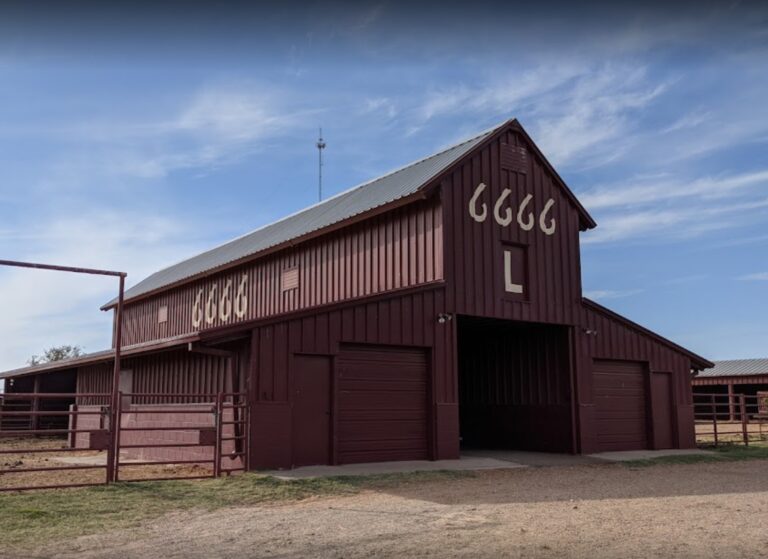
6. 6666 Ranch (Four Sixes Ranch)
The 6666 Ranch, often referred to simply as the Four Sixes Ranch, is a legendary property spanning 266,000 deeded acres in West Texas. Established in the 1870s by Samuel “Burk” Burnett, this ranch has become synonymous with excellence in horse breeding, cattle ranching, and land stewardship. Its name, derived from the distinctive cattle brand “6666,” reflects a legacy of Western heritage and ranching tradition.
Historical Background
The story of the 6666 Ranch begins with Samuel Burk Burnett, a visionary rancher and entrepreneur who purchased the original land in 1870s. Over the years, through hard work and strategic acquisitions, Burnett expanded the ranch into one of the largest and most renowned properties in Texas. His dedication to quality breeding and ranch management laid the foundation for the ranch’s continued success. For the details of the recent sell and acquisition of the 6666 Ranch go here: LINK
Size and Landscape
Covering three different counties (King, Sherman, and Carson) and over 266,000 acres of diverse terrain, the 6666 Ranch showcases the beauty and ruggedness of West Texas. Its landscape includes rolling plains, mesquite groves, and scenic vistas, offering a picturesque backdrop for ranching activities and outdoor adventures. The ranch’s expansive pastures provide ample space for cattle grazing, while designated areas are dedicated to horse breeding and training.
Horse Breeding and Training
One of the hallmarks of the 6666 Ranch is its world-class horse breeding and training programs. The ranch is renowned for producing top-quality Quarter Horses, known for their athleticism, agility, and versatility. From working ranch horses to champion performance horses, the 6666 Ranch’s bloodlines are sought after by equestrians and ranchers worldwide.
The ranch’s state-of-the-art facilities, including breeding barns, training arenas, and veterinary clinics, ensure that each horse receives the care and attention needed to thrive. Experienced trainers and handlers work closely with the horses, preparing them for a variety of disciplines, from cutting and reining to ranch versatility and rodeo events.
Cattle Ranching and Operations
In addition to its reputation in horse breeding, the 6666 Ranch maintains a robust cattle ranching operation. The ranch’s herds consist of quality beef cattle, carefully selected for their genetics and adaptability to the West Texas climate. Sustainable grazing practices and land management techniques ensure that the ranch’s grasslands remain healthy and productive.
The ranch also offers grazing leases and hunting opportunities, allowing visitors to experience the beauty of the West Texas landscape while participating in traditional ranching activities. Guided tours and educational programs provide insight into ranching practices, conservation efforts, and the ranch’s historical significance.
Legacy and Cultural Impact
The 6666 Ranch holds a special place in Texas’s ranching heritage and Western culture. Its iconic “6666” brand, emblazoned on cattle and horses alike, symbolizes a tradition of excellence and integrity. The ranch’s contributions to the equine industry, agricultural innovation, and land conservation have left a lasting impact on the region and the state as a whole.
Beyond its economic and agricultural significance, the 6666 Ranch embodies the spirit of the American West, capturing the imaginations of ranchers, cowboys, and enthusiasts around the world. Its commitment to preserving Western traditions while embracing modern ranching practices ensures that the legacy of the Four Sixes Ranch will endure for generations to come.
In conclusion, the 6666 Ranch stands as a testament to Texas’s ranching heritage, blending history, innovation, and natural beauty into a timeless landscape. Whether admiring its champion Quarter Horses, exploring its vast pastures, or learning about its storied past, visitors to the 6666 Ranch experience a slice of authentic Western life and the enduring legacy of the American frontier. For a deep dive into the 6666 Ranch go here – LINK
Please refer to the map of the “6666 Ranch” below. Enjoy the live interactive mapping:
Conclusion
The five largest ranches in Texas represent a rich tapestry of history, culture, and natural beauty. From the iconic King Ranch to lesser-known gems like La Escalera Ranch, these properties embody the spirit of Texas’s ranching heritage. As stewards of the land, they play a vital role in conservation, sustainable agriculture, and economic prosperity. By exploring these ranches, we gain insight into Texas’s past, present, and future as a leader in ranching excellence.

A Comprehensive Guide to Financing Land
A Comprehensive Guide to Financing Land: Strategies, Considerations, and Steps Introduction Land has always been a symbol of stability, opportunity, and prosperity. From ancestral homesteads
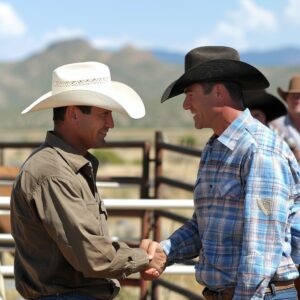
Mastering Land Sales: A Comprehensive Guide to Selling Your Property
Mastering Land Sales: A Comprehensive Guide to Selling Your Property Introduction The process of selling land is often perceived as a complex and challenging endeavor,
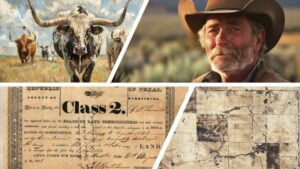
Legal Checklist for Ranch Investments
Legal Checklist for Ranch Investments In ranch investments, legal considerations are the bedrock upon which successful transactions and operational endeavors are constructed. Ranching ventures are
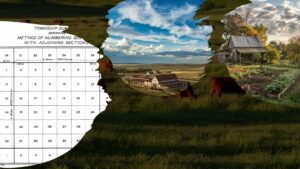
Is 10 Acres Considered a Ranch? Debunking Common Misconceptions
Is 10 Acres Considered a Ranch? Debunking Common Misconceptions 1. Introduction Ranching, with its iconic imagery of wide-open spaces, cowboys herding cattle, and sprawling homesteads,
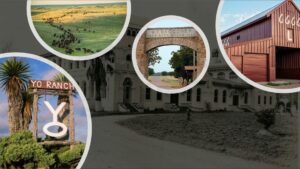
The Top Five Largest Ranches in Texas: A Deep Dive into the Heart of Ranching Heritage
The Top Five Largest Ranches in Texas: A Deep Dive into the Heart of Ranching Heritage Introduction Texas, often hailed as the heart of ranching
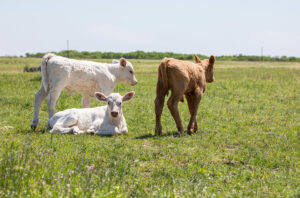
The Intricacies of the 2-Cow Tax Loophole in California: Unveiling the Complexities
The Intricacies of the 2-Cow Tax Loophole in California: Unveiling the Complexities Introduction Taxation is a fundamental aspect of modern society, serving as the
